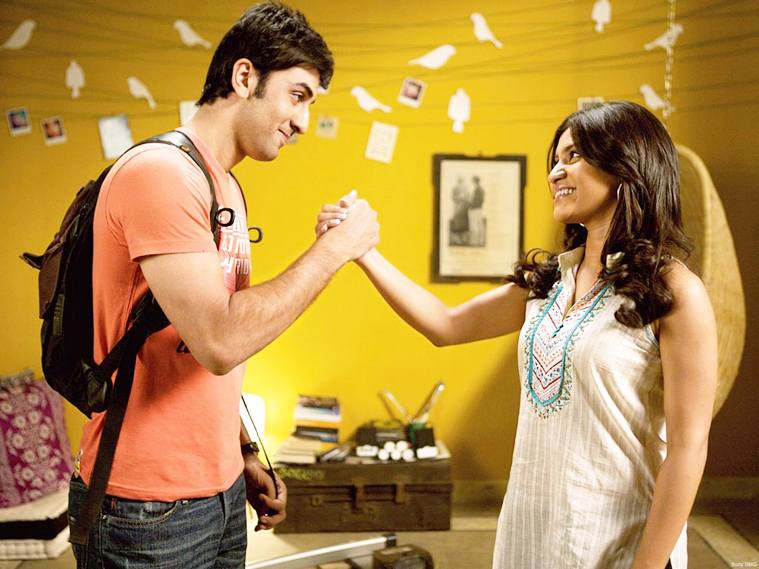
While the West offers Lady Bird, here’s looking at how our coming-of age genre lost the path
Written by Sampada Sharma | New Delhi | Published: January 13, 2018 6:00 a..
Written by Sampada Sharma | New Delhi | Published: January 13, 2018 6:00 am Ranbir Kapoor became the poster boy of the ‘coming of age’ in Hindi cinema. But if explored further, we might find our Lady Bird soon.
Until a decade ago, Hindi cinema hadn’t yet popularised the genre, ‘coming of age’ but the genre is now at the base of most urban Hindi films. The mass production of movies in those days wasn’t focused on the urban millennial but things started to change with the release of Ayan Mukerji’s 2009 film Wake Up Sid. Soon after the release of this film, the makers found an untapped market of urban audience, the ones who wanted to see their aspirations on the silver screen and realised that the demons in their lives weren’t external.
While Wake Up Sid gets all the credit for introducing the ‘coming of age’ phrase to the audience, this generation’s first interaction with the said genre happened way back in 2001 with Farhan Akhtar’s Dil Chahta Hai. The director’s second film, Lakshya, was also an extension of the same. From the Hindi films that we have seen in the past decade or so, our understanding of ‘coming of age’ is where the protagonist is struggling to hear their inner voice and contemplating about decisions when it comes to their career and life. Love stories aren’t at the forefront here, neither are conflicts with parents, what drives these stories are the individual paths that one has to take to realise their dream.
 Still from Wake Up Sid
Still from Wake Up Sid
With films like Udaan (2010), Zindagi Na Milegi Dobara (2011), and even Yeh Jawani Hai Deewani (2013), this genre soon became mainstream and before we knew it, we got the same story packaged differently every single time. Such is the curse with anything novel, we milk the formula to a point where the audience is now done with watching the struggles of a privileged 20-something whose life revolves around a European vacation and binge drinking on the weekends. We saw an underwhelming example of the same in last year’s Noor. Imtiaz Ali’s 2015 film Tamasha was an extra-ordinary film but at the root of it, the story told here was something we had heard many times. And by now, Ranbir Kapoor had already become the designated voice of every rich, urban millennial.
But coming of age isn’t a genre that was invented by Hindi cinema, let’s take a look at the West and see how they have dealt with the same.
In 2017, we saw films like Call Me By Your Name and Lady Bird and while the treatment of both these films is poles apart, they still fall under the same genre. In Call Me By Your Name, we saw a summer romance and the heartbreak Eliot is left with at the end of Oliver’s trip. In Lady Bird, we saw Christine navigating her troublesome teens and the volatile yet loving relationship she shares with her mother. In both these films, the protagonists were struggling to hear the voice of their inner self and the journey they took to realise their true self formed the crux of the story.
 Still from Call Me By Your Name
Still from Call Me By Your Name
The Breakfast Club, Dazed and Confused, The Perks of being a Wallflower, Boyhood, Frances Ha and many other films fall under the same category but we have seen that the treatment of all these films has been dramatically different. This isn’t a case of Bollywood v/s Hollywood but in fact it shines light on the various elements that makes the films from both these industries categorically different.
The socio-economic difference being the primary one but what also plays apart is the conditioning of the audience in both these parts of the world. A large part of the Indian audience deals with a lot of pain and grief in their lives and movies are an excuse to escape the painful realities so watching a picturesque location gives us something to aspire to. Here, cinema is first meant for entertainment and then seen as an art form. The conditions in the West are quite different so it just gives them more liberty to experiment over and over again.
 Still from Yeh Jawaani Hai Dewani
Still from Yeh Jawaani Hai Dewani
Indian cinema is one of the largest producers of films in the world and with increasingly diverse taste of the audience, we can now see the lines of genres being blurred. In an interview with Film Companion, director Shakun Batra had once shared that the treatment of Kapoor & Sons was heavily inspired from the mumblecore film Drinking Buddies. While the ethos of Kapoor & Sons was as Indian as one can get, the treatment of the film was unique for this side of the world.
The ‘coming of age’ genre became a beast that started becoming formulaic after Ranbir Kapoor became the poster boy of the same but if there’s something we can learn from the Golden Globe nominees this year, it is only that the genre is yet to be fully explored with the millennial demographic and who knows, we might find our Lady Bird soon.
For all the latest Entertainment News, download Indian Express App
© IE Online Media Services Pvt Ltd

